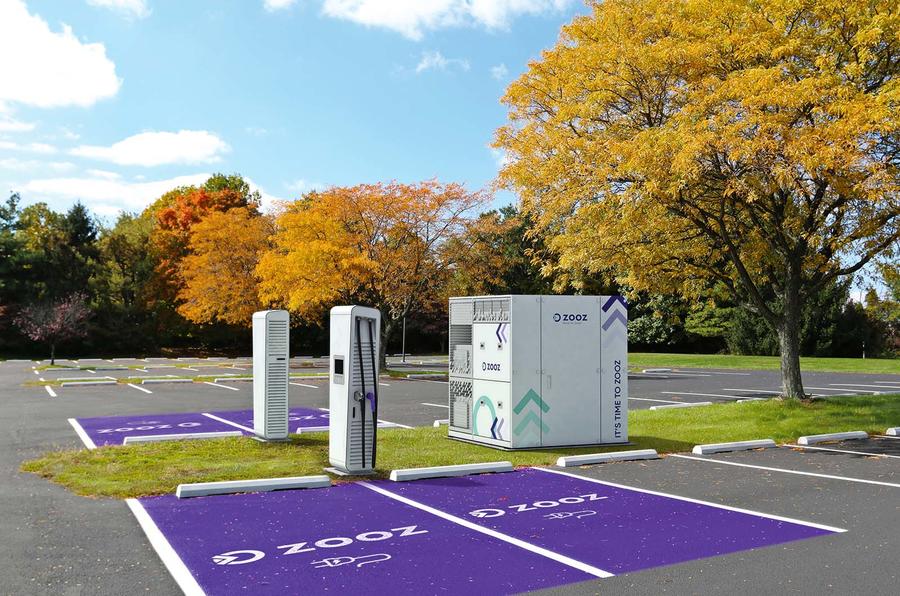The flywheel as a form of energy storage is making a comeback and could be the thing to save us from long queues at EV rapid chargers on busy routes.
Flywheels have been around since the year dot. Their most common use is for smoothing out the power source in a reciprocating engine. They do that by storing kinetic energy, guaranteeing a smooth stream torque as an engine takes those millisecond breathers between the pops and bangs that make it go.
Bigger or much faster flywheels act as mechanical batteries, and again their use in various forms of transport (such as railway locomotives and trams) and in stationary applications isn’t new.
They were nearly used by Williams during the KERS period in Formula 1, but Williams Hybrid Power was set up to develop the idea commercially instead. Other developers of small, very high-speed flywheel innovations included UK-based Flybrid Systems and Volvo, which developed and tested prototypes.
Where they could shine, though, is as energy storage systems – mechanical batteries attached to ultra-rapid chargers.
A reliable public charging network, or rather the lack of one, is a source of growing concern among both existing and potential EV drivers. The growth of EV sales in the UK is fine, but range anxiety has been swapped for charging anxiety as reports grow of drivers arriving at charge points to find them busy, blocked or out of service.
There’s enough power in the UK grid as a whole to cover EV expansion, and National Grid has published a report (entitled Future Energy Scenarios) on how it plans to make sure there is.
But coping with the increase in power needed in local networks remains a challenge. Rapid and ultra-rapid chargers can’t perform as they should if the local substations to which they’re connected can’t meet the demand, yet upgrading those is costly and time-consuming.
Flywheel systems have the advantage that they can build up a store of energy relatively slowly, drawing on existing grid power, but then release much higher levels of energy as a kind of boost once they’re ‘charged up’. That means a 350kW ultra-rapid charger could be installed in conjunction with a flywheel storage system without the slow, disruptive and expensive upgrades to the local electricity network.
It’s happening, too. UK firm Levistor is developing flywheel technology that can be used for grid boosting and will start commercial trials in the first quarter of next year.
Israeli firm Zooz has also produced the Zoozter Kinetic Power Booster to do a similar job. The flywheel system is made from hardened hot-rolled laminated steel which, along with all the materials used in the machine, are said to be 100% recyclable.





Join the debate
Add your comment
I don't know what is more worrying - the lack of journalistic skills or the nonsense from the National Grid.
Last winter there were real fears that the lights would go out in the UK, and indeed they actually paid people with smart meters not to use power at peak times.
Now, suddenly there is sufficient capacity for not just current, but future demand for EV charging!
How can that be? Last winter they didn't want people to turn on a 4KW oven, but next winter, when we all stop at the fast chargers on the way home and plug in and charge at 250KW, there won't be a problem?
There was no danger of a blackout. It was about avoiding bringing polluting powerplants online in ultra high demand periods.
Google "ESO Demand Flexibility Service"
The National Grid can cope with EVs. There is long term planning and a lot of work gone in to planning for it.
"I don't know what is more worrying - the lack of journalistic skills or the nonsense from the National Grid." - or that you didn't read it properly?There's enough electricity available, the problem is local substations can't always distribute it adequately.
Press release from start up company printed verbatim as news!!
I get paid more than $200 to $400 per hour for working online. f2 I heard about this job 3 months ago and after joining this I have earned easily $30k from this without having online working skills . Simply give it a shot on the accompanying site…
Here is I started.…………>> www.jobsrevenue.com